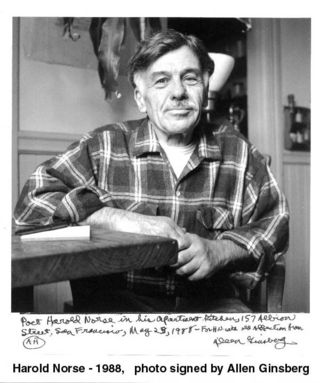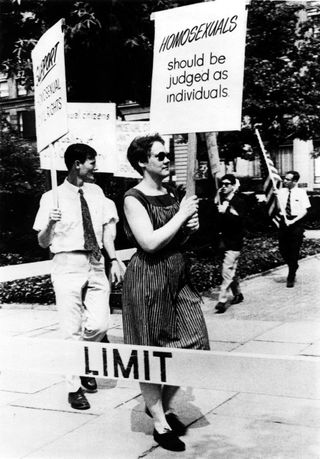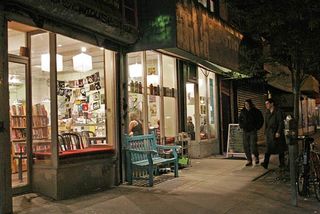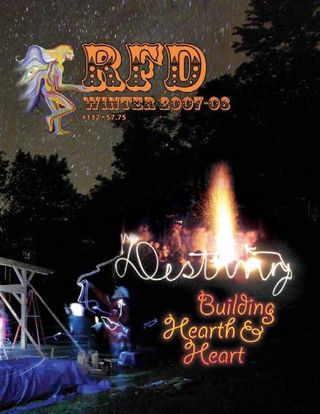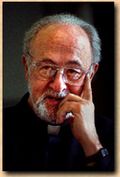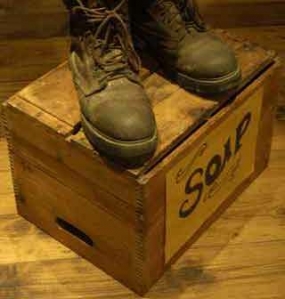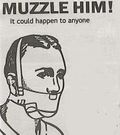We got a nice note from our friend, philosopher, playwright and rabblerouser, Arthur Evans:
Dear Friends and Neighbors,
The Stonewall Riot, which initiated the modern phase of the gay liberation movement, occurred at a Manhattan gay bar forty years ago this June.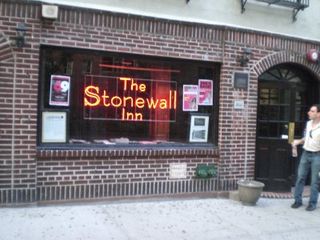
Other gay riots occurred before Stonewall, but they were flashes in the pan. Stonewall was unique because its energy persisted in various organizational forms for decades. This fusion of new energy with organizational continuity is what triggered the gay revolution.
Unfortunately, I missed the Stonewall Riot itself. However, I was deeply involved in two groups that it generated: the Gay Liberation Front (G.L.F), and the Gay Activists Alliance (G.A.A.), the second of which I helped create.
In those days, politicians avoided us, the media derided us, members of the clergy called us sinful, and psychiatrists said we were sick. The same was true of even the most liberal elements of society.
For example, Carol Greitzer was the city council member for Greenwich Village and a leader of the most liberal Democratic club in the state. Yet she refused to accept, or even touch, a simple petition calling for basic civil rights for gay people.
The Village Voice, one of the most liberal newspapers in the U.S., refused to accept any ad that appealed to gay people. The New York Times refused to use the word “gay” in its news reports.
In sum, we were excluded from both civil society and the body politic. Which meant we had to elbow our way in. And so we did, using “zaps.”
These were vociferous, but nonviolent, personal confrontations with homophobes. Zaps combined theatricality, humor, and impassioned eloquence. G.A.A., in particular, at the instigation of Marty Robinson, perfected zaps into an art form.
For example, Herman Katz, the City Clerk, was responsible for issuing marriage licenses in New York. One day in 1970, out of the blue, he made scornful comments to the press about the very idea of same-sex marriage.
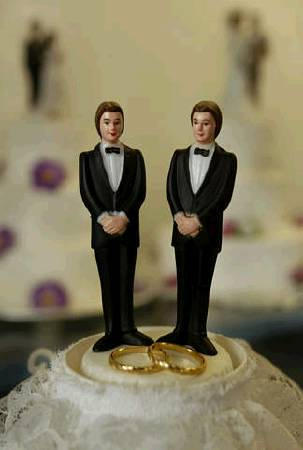 So Marc Rubin and Pete Fisher of G.A.A. organized a take-over Katz’s office. With Marc and Pete in the lead, about a dozen of us suddenly appeared in Katz’s inner sanctum, bearing a big wedding cake with two same-sex figurines on top.
So Marc Rubin and Pete Fisher of G.A.A. organized a take-over Katz’s office. With Marc and Pete in the lead, about a dozen of us suddenly appeared in Katz’s inner sanctum, bearing a big wedding cake with two same-sex figurines on top.
We gave coffee and donuts to the clerical staff. Pete strummed his guitar, while the rest of us sang enthusiastically about the delights of gay romance.
I took over the phones and told callers that the office was only giving marriage licenses that day to gay couples. “Are you a homosexual?” I asked one nonplussed caller. “No? Well then, you’re out of luck. Try New Jersey.”
Naturally, the police came and took us away. But the spectacle, which had been witnessed by the press, made engaging news copy.
Because of highly publicized zaps like this, hundreds of gay men and women who had been closeted were inspired to step out into the light and join the struggle.
Thanks to the lasting consequences of the Stonewall Riot, it is now possible for politicians in some parts of the nation to be openly gay. In fact, in places like San Francisco, being openly gay can help build a career in politics.
Which is a good thing. But I hope we never forget the sassy attitude of the Stonewall era to all people in authority, including even gay politicians.
Stonewall means having a sense of self worth, thinking for yourself, and taking on all the bullies.
Yours for gay liberation,
Arthur Evans

